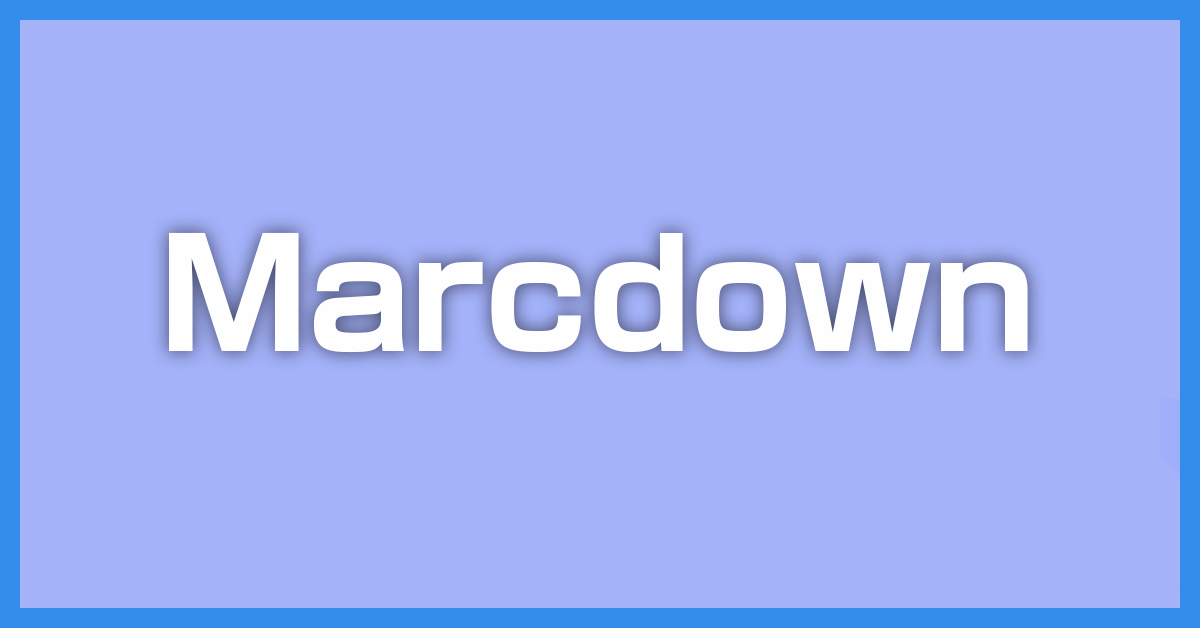Markdown is a lightweight markup language that allows you to easily write in plain text. The term “Markdown” reflects the idea of simplifying (“down”) traditional “markup,” thereby enabling you to express structure and styling in a clear and readable way without using complex HTML tags.
Main Features and Benefits of Markdown
Simple and Easy-to-Learn Syntax:
To begin with, by placing special characters like #, *, or - at the beginning or within a line, you can easily apply formatting such as headings, lists, bold, and italic.
Since there’s no need to memorize complex HTML tags, even those without programming knowledge can start writing with ease.
High Readability:
Moreover, even as a plain text file, Markdown is structured in a way that’s easy to understand at a glance. The symbols don’t interfere with the text and instead enhance its visual clarity.
Versatility and Multiple Output Formats:
In addition, Markdown content can be converted into many formats such as HTML, PDF, Word, and presentation slides. Thanks to this flexibility, it’s useful for web pages, documentation, notes, blog posts, and technical manuals.
Wide Range of Editing Tools:
What’s more, you can edit Markdown with basic text editors like Notepad. On top of that, many advanced Markdown editors and web services (such as GitHub, Qiita, Slack, and WordPress) support Markdown syntax out of the box.
📘 Markdown Examples and Explanation
1. Headings
# Heading 1 ## Heading 2 ### Heading 3 #### Heading 4
Display Example:
Heading 1
Heading 2
Heading 3
Heading 4
The number of
#symbols defines the level. Typically, one#is the main heading, and more hashes mean subheadings.
2. Emphasis
*Italic* _Italic_ **Bold** __Bold__ ~~Strikethrough~~
Display Example:
Italic
Bold
Strikethrough
Simply enclose text with
*or_to apply styles like italic or bold.
3. Lists
Unordered List
- Item 1 - Item 2 - Nested item * This also works
Display Example:
- Item 1
- Item 2
- Nested item
- This also works
Ordered List
1. Item 1 2. Item 2 1. Subitem<
Display Example:
- Item 1
- Item 2
- Subitem
Use
-or*for unordered lists, and numbers with periods for ordered lists.
4. Links & Images
[Google](https://www.google.com)Display Example: Google
Put the link text inside
[]and the URL inside(). This makes hyperlinking quick and intuitive.
5. Code
Inline Code
This is `code`.Multiline Code Block
```php
<?php echo "Hello, World!"; ?>
```Display Example:
Use backticks
`for inline code, and triple backticks```for code blocks. You can also specify the language to enable syntax highlighting.
6. Blockquote
> This is a quote. >> Nested quote
Display Example:
This is a quote.
Nested quote
7. Horizontal Rule
---Display Example:
8. Table
| Name | Age | Location |
|------|-----|----------|
| John | 25 | New York |
| Emily | 30 | Los Angeles |Display Example:
| Name | Age | Location |
|---|---|---|
| John | 25 | New York |
| Emily | 30 | Los Angeles |
To create tables, use
|to separate columns and-to define the header row. This structure keeps your data clean and aligned.
Additionally, if your editor supports GitHub Flavored Markdown (GFM), you can even include checkboxes and emojis for richer content:
- [ ] Incomplete task
- [x] Completed task
:smile:Display Example:
☐ ☑ 😄
